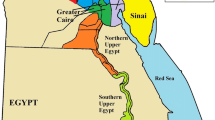Abstract
To compare genetic markers for population genetics analysis, allozyme electrophoresis and random amplified polymorphic DNA (RAPD) were used to detect the genetic structure of scallopChlamys farreri population. Thirteen enzymes (MDH, ME, IDH, GPI, PGM, PEP−LG, PEP−PP, ACP, AK, PK, AAT, SOD, EST) in three buffer systems (TC, Ph6.9; TMME, Ph 7.4; and EBT, pH8.9) were selected and 22 loci were used for the analysis, among them 7 loci (Gpi, Pgm, Pep−LG-1, Pep−PP Aat-2, Est-2, Est-3) were polymorphic which attributed 31.82% to the total. The average of heterozygosity was 0.113 and most of the studied loci showed heterozygote deficiencies. The same specimens were investigated using 10 arbitrarily selected primers (10-base). Twenty two of 54 RAPD fragments were polymorphic with average heterozygosity of 0.194. The result indicated that the two types of markers reflected a consistent trend in the parameter values of genetic diversity of the population, but RAPD revealed more information of genetic variation than allozyme electrophoresis.
Similar content being viewed by others
References
Armbruster, G., 1997. Evaluations of RAPD markers and allozyme patterns: Evidence for morphological convergence in the morphotype ofCochlicopa lubricella (Gastropoda: Pulmonata Cochlicopidae).J. Molluscan Stud. 63: 379–388.
Beaumont, A. R., 1982. Variations in heterozyosity at the loei between year classes ofChlamys opercularis from a Scottish sea-loch.Mar. Biol. Lett. 12: 5–14.
Beaumont, A. R., 1986. Genetic aspects of hatchery rearing of the scallop,Pecten maximus (L.).Aquaculture 57: 99–110.
Bierne, N., I. Beuzart, V. Vonau et al., 2000. Microsatellite-associated heterosis in hatchery-propagated stocks of the shrimpPenaeus stylirostris.Aquaculture 184: 203–219.
Borsa, P., 2002. Allozyme, mitochondrial-DNA, and morphometric variability indicate cryptic species of anchovy (Engraulis encrasicolus).Biol. J. Linnean Soci. 75: 261–269.
Bricelj, V. M. and M. K. Krause, 1992. Resource allocation and population genetics of the bay scallop,Argopecten irradians irradians: effects of age and allozyme heterozygosity on reproductive output.Mar. Biol. 113: 253–261.
Dhar, A. K., M. A. Pokras, D. K. Garcia et al., 1997. Analysis of genetic diversity in common loon Gavia immer using RAPD and mitochondrial RFLP techniques.Mol. Ecol. 6: 581–586.
Fairbrother, J. E. and A. R. Beaumont, 1993. Heterozygote deficiencies in a cohort of newly settledMytilus edulis spat.J. Mar. Biol. Ass. U. K. 73: 647–653.
Fujio, Y., 1982. A correlation of heterozygosity with growth rate in the Pacific oyster,Crassostrea gigas.Tohoku J. Agr. Res. 33: 66–75.
Garcia, D. K., M. A. Faggart, L. Rhoades et al., 1994. Genetic diversity of culturedPenaeus vannamei shrimp using three molecular genetic techniques.Mol. Mar. Biol. Biotechnol. 3: 270–280.
Guo, X. M., E. F. Susan and F. S. Zhang, 1999. Molluscan aquaculture in China.J. Shellfish. Res. 18: 19–31.
Heipel, D. A., J. D. D. Bishop, A. R. Brand et al., 1998. Population genetic differentiation of the great scallopPecten maximus in western Britain investigated by randomly amplified polymorphic DNA.Mar. Ecol. Prog. Ser. 162: 163–171.
Hirschfeld, B. M., A. K. Dhar, K. Rask et al., 1999. Genetic diversity in the eastern oyster (Crassostrea virginica) from Massachusetts using the RAPD technique.J. Shellfish Res. 18: 121–125.
Lewontin, R. C. and J. L. Hubby, 1966. A molecular approach to the study of genetic heterozygosity in natural populations. II. Amount of variation and degree of heterozygosity in natural populations ofDrosophila pseudoobscura.Genetics 54: 595–609.
Macaranas, J. M., P. B. Mather, P. Hoeben et al., 1995. Assessment of genetic variation in wild populations of the redelaw crayfish (Cherax quadricarinatus, von Martens 1868) by means of allozyme and RAPD-PCR markers.Mar. Freshwat. Res. 46: 1 217–1 228.
Murphy, R. W., J. W. Sites Jr., D. G. Buth et al., 1996. Proteins: isozyme electrophoresis.In: Hillis, D. M., C. Moritz and B. K. Mable eds, Molecular Systematics. Sinauer Associates, Sunderland, Massachusetts, pp. 51–120.
Rios, C., S. Sanz, C. Saavedra et al., 2002. Allozyme variation in populations of scallopsPecten jacobaeus (L.) andP. maximus (L.) (Bivalvia: Pectinidae), across the Almeria-Oran front.J. Expert. Mar. Biol. Ecol. 267: 223–244.
Scribner, K. T., P. A. Crane, W. J. Spearman et al., 1998. DNA and allozyme markers provide concordant estimates of population differentiation: analyses of U.S. and Canadian populations of Yukon River fall-run chum salmon (Oncorhynchus keta).Can. J. Fish. Aquat. Sci. 55: 1 748–1 758.
Shaklee, J. B., F. W. Allendorf, D. C. Morizot et al., 1990. Gene nomenclature for protein-coding in fish.Trans. Am. Fish. Soc. 119: 2–15.
Silval, E. P. and C. A. M. Russo, 2000. Techniques and statistical data analysis in molecular population genetics.Hydrobiologia 420: 119–135.
Stothard, J. R. and D. Rollinson, 1996. An evaluation of random amplified polymorphic DNA (RAPD) for the identification and phylogeny of freshwater snails of the genusBulinus (Gastropoda: Planorbidae).J. Molluscan Stud. 62: 165–176.
Stothard, J. R., A. F. Mgeni, K. S. Alawi et al., 1997. Observations on shell morphology, enzymes and random amplified polymorphic DNA inBulinus africanus group snails (Gastropoda: Planorbidae) in Zanzibar.J. Molluscan Stud. 63: 489–503.
Todd, C. D., A. M. Walker, K. Wolff et al., 1997. Genetic differentiation of population of the copepod sea louseLepeophtheirus salmonis (Kroyer) ectoparasitic on wild and farmed salmonids around the coasts of Scotland: Evidence from RAPD markers.J. Expert. Mar. Biol. Ecol. 210: 251–274.
Tyler-Walters H. and A. R. Hawkins, 1995. The application of RAPD markers to the study of the bivalve molluscLasaea rubra.J. Mar. Biol. Ass. U. K. 75: 563–569.
Volckaert, F. and E. Zouros, 1989. Allozyme and physiological variation in the scallopPlacopecten magellanicus and a general model for the effects of heterozygosity on fitness in marine molluscs.Mar. Biol. 103: 51–61.
Wilding, C. S., J. W. Latchford and A. R. Beaumont, 1998. An investigation of possible stock structure inPecten maximu s(L.) using multivariate morphometrics, allozyme electrophoresis and mitochondrial DNA polymerase chain reaction-restriction fragment length polymorphism.J. Shellfish Res. 17: 131–139.
Author information
Authors and Affiliations
Corresponding author
Additional information
Supported by Chinese Basic Research Project (G1999012007) and National Natural Science Foundation of China (No. 39700017).
Rights and permissions
About this article
Cite this article
Baozhong, L., Feng, Y., Bo, D. et al. The comparison between allozyme and RAPD makers for the population genetic structure analysis of scallopChlamys farreri . Chin. J. Ocean. Limnol. 24, 295–299 (2006). https://doi.org/10.1007/BF02842631
Received:
Accepted:
Issue Date:
DOI: https://doi.org/10.1007/BF02842631




